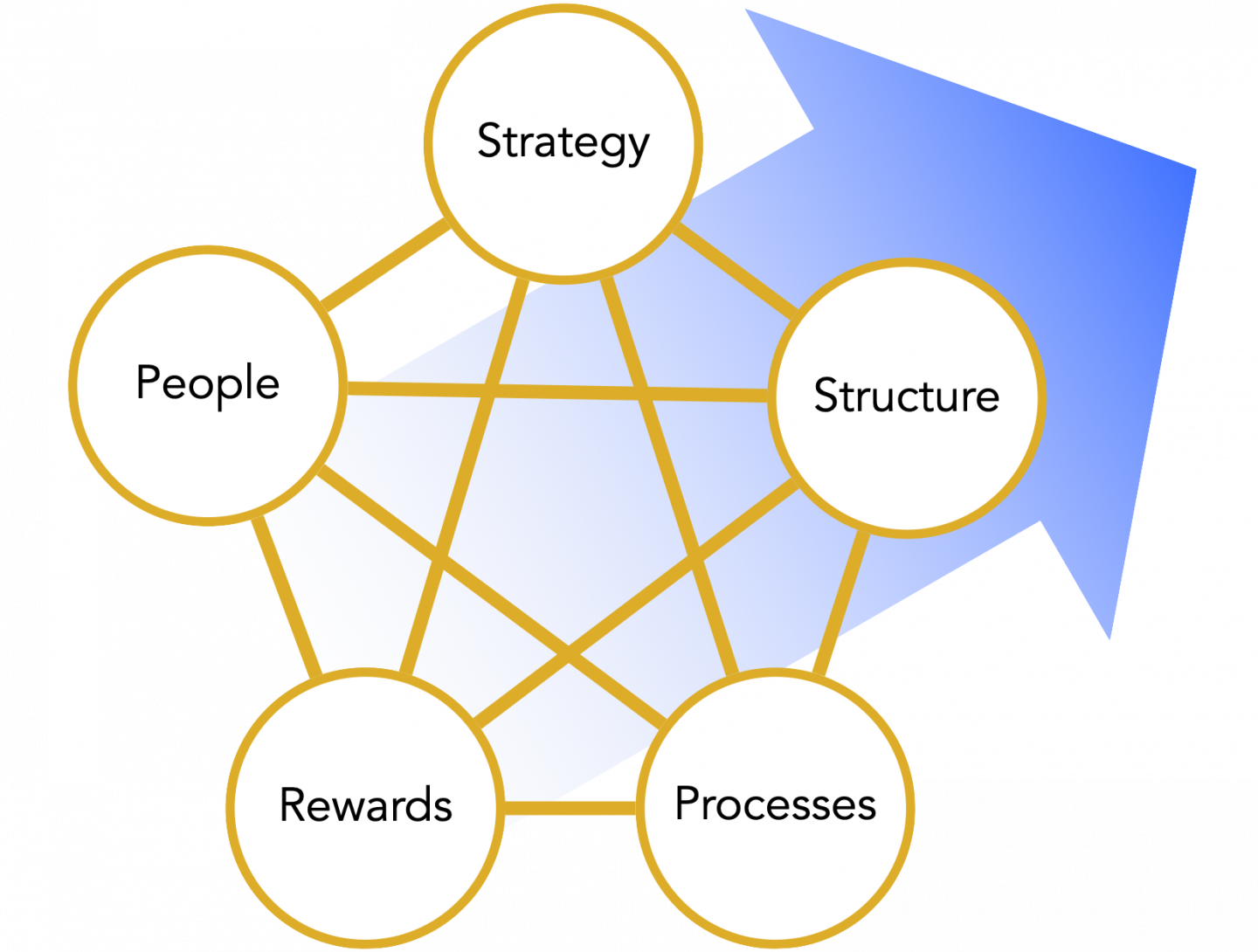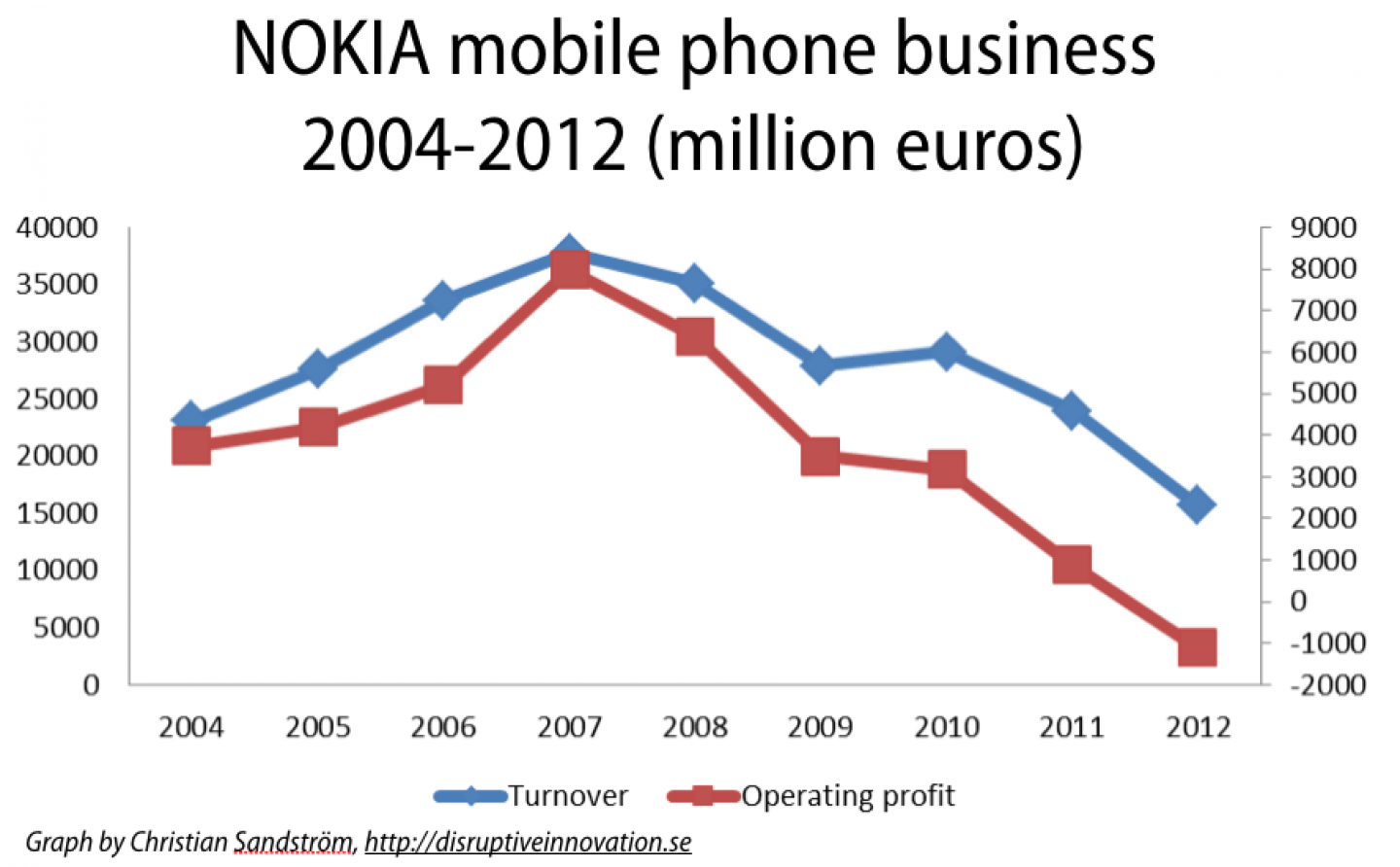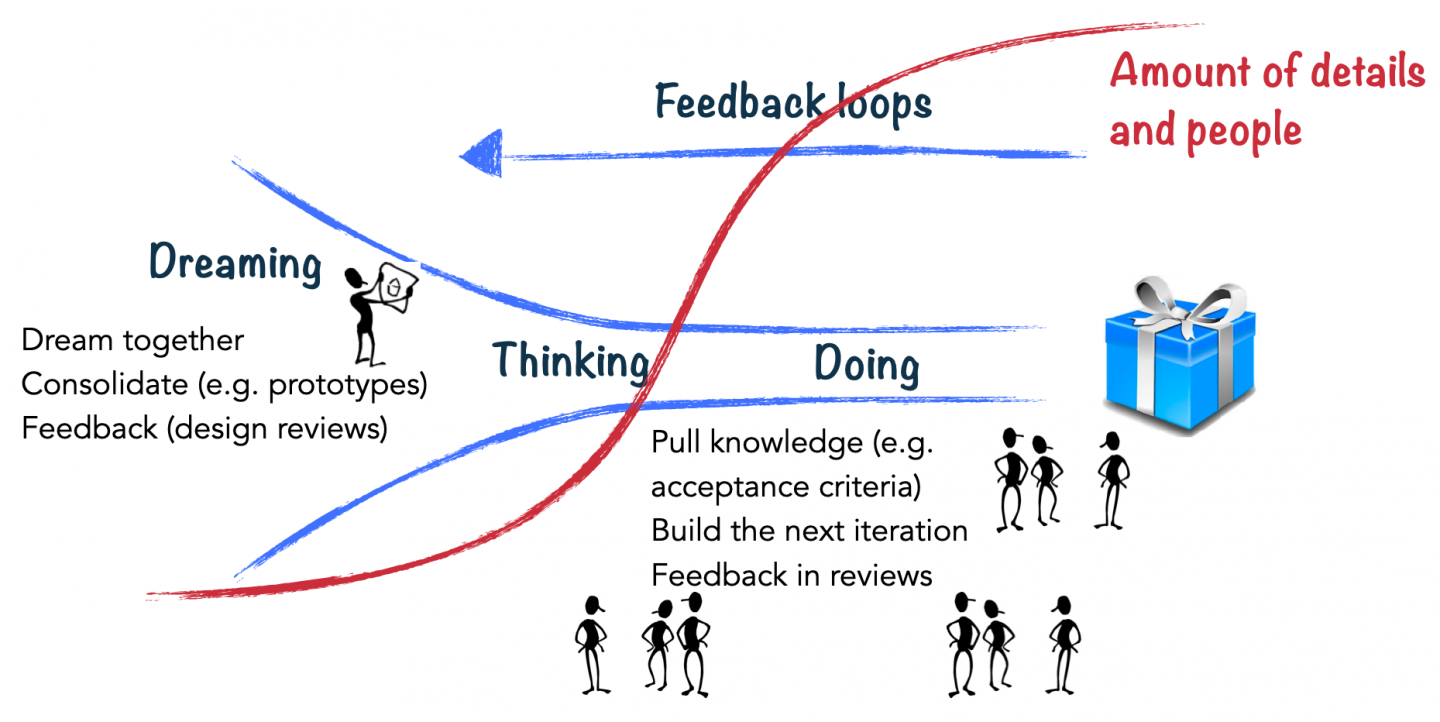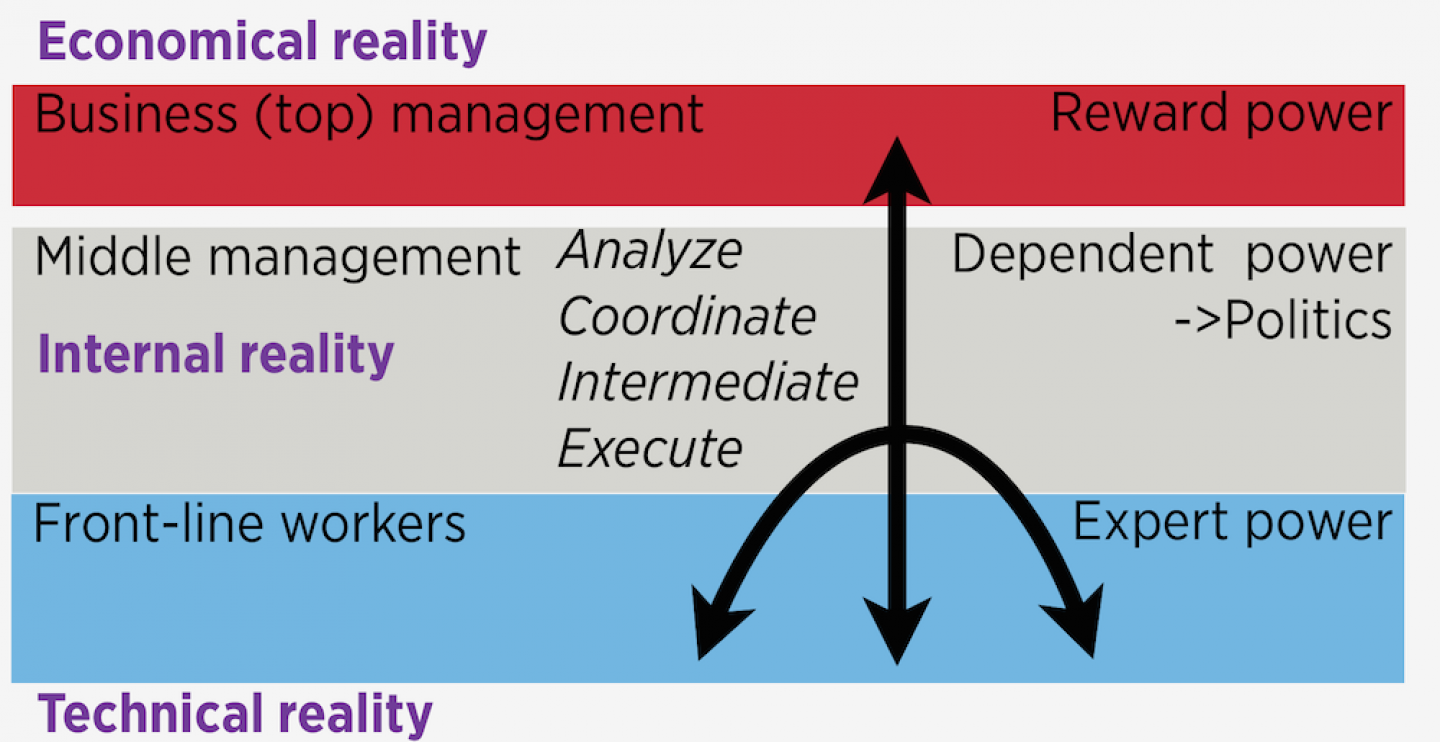
Software Product Development
LeSS (Large-Scale Scrum) aims to simplify the product development organization, even radically.
It provides an elegant process for organizational units with seven or fewer teams, optimizing teamwork, learning, and business value creation. This is the starting point for adaptive improvement.
For the larger organization, LeSS provides several hundred reality-tested organizational design patterns with a recommendation to try or avoid.



